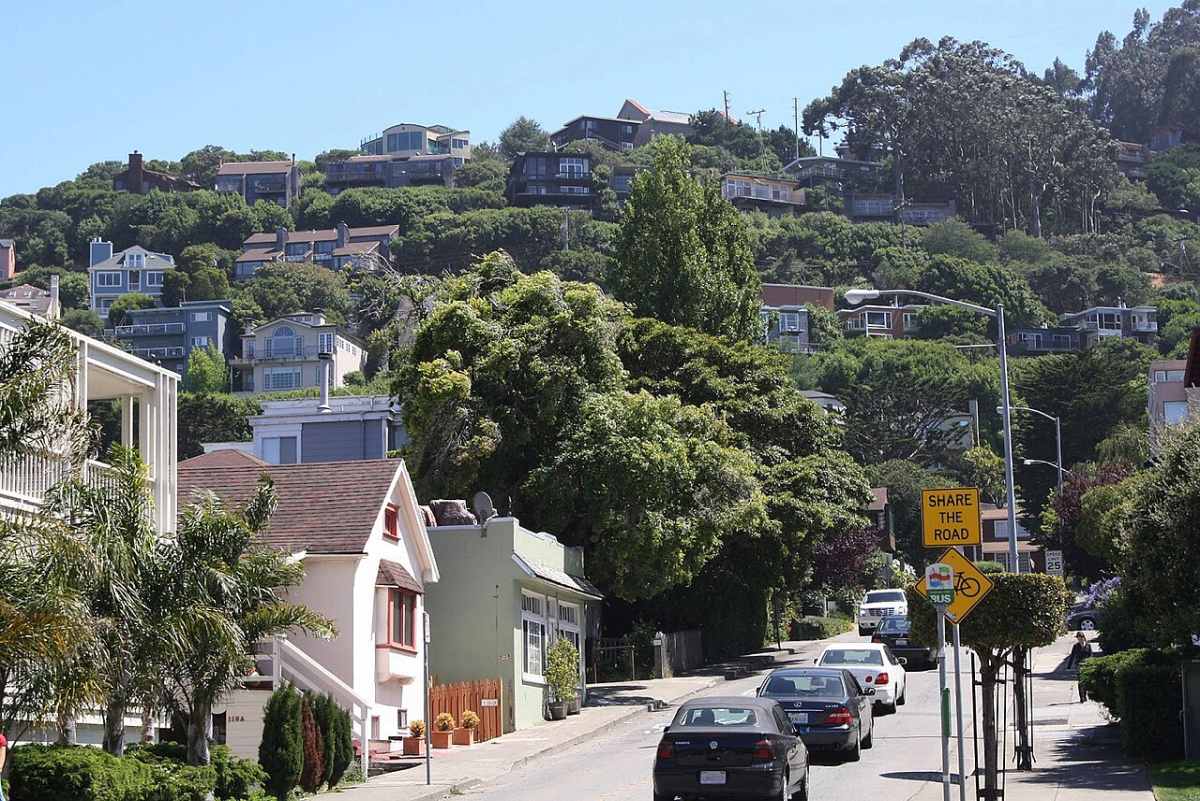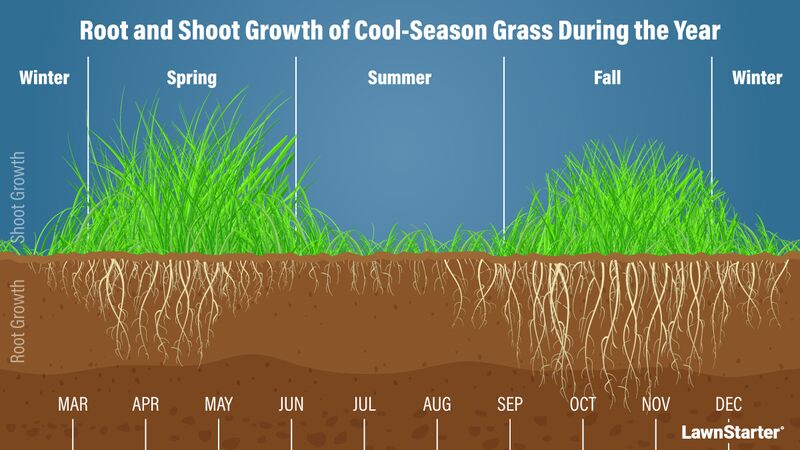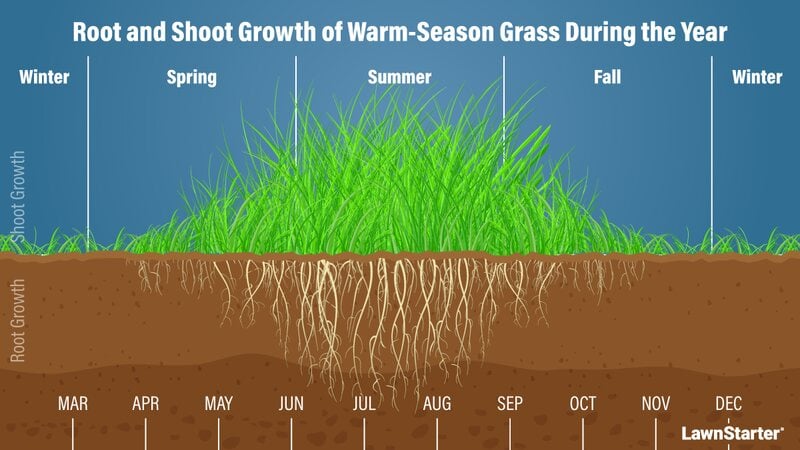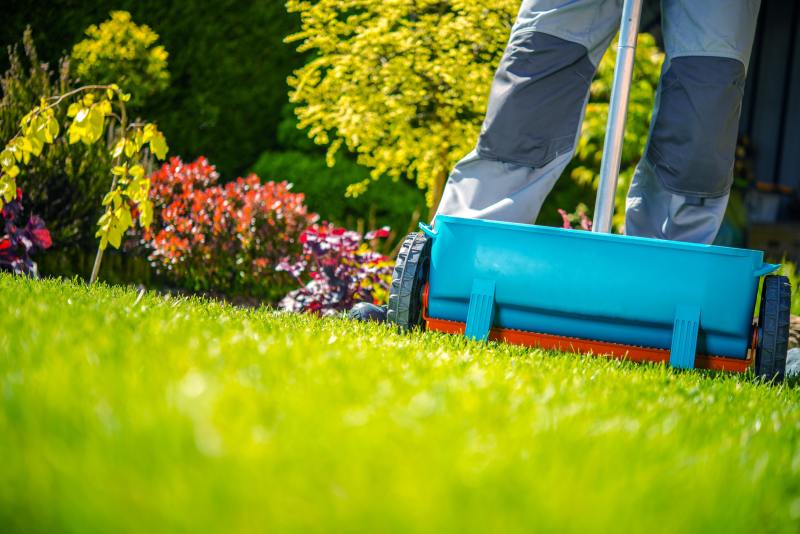
The best time to fertilize cool-season grass in the Bay Area is from March to May and September to October. For warm-season grass, the best time is from May to June and September to October.
Like any living thing, grass needs nourishment to survive, and with lawns, when you supply that nourishment is important. When fertilizers rich in nitrogen, phosphorus, and potassium are applied at the right times of the year, grass consumes them and process them very efficiently.
Key Takeaways
Fertilizer promotes healthy growth: Nitrogen, potassium, and phosphorus in fertilizer help grass grow green and healthy.
Fertilize at the right time: Fertilize cool-season grasses from September to October. Fertilize warm-season grasses from May to June and September to October.
Use the right amount of fertilizer: Dumping all the fertilizer at once will cause nitrogen burn. Reapply quick-release fertilizers every four weeks and slow-release fertilizers every six weeks.
When to Fertilize a Cool-Season Lawn in the Bay Area
The San Francisco Bay Area gets warm, dry summers and mild, wet winters. Cool-season grasses like Kentucky bluegrass, tall fescue, perennial ryegrass, and fine fescue perform exceptionally well here. Check out this guide on the best grass for the Bay Area.
Cool-season grasses grow actively in early spring and fall when temperatures range from 55 to 75 degrees Fahrenheit.

The best time to fertilize cool-season grasses is early fall, September to October. This promotes strong growth in the spring when grass comes out of hibernation.
When to Fertilize a Warm-Season Lawn in the Bay Area
Bermudagrass does fine in mild winters, as in Richmond, Albany, and Cloverdale. If you live in colder cities, such as Belvedere, Brentwood, and Antioch, you can overseed this grass with annual ryegrass to help it retain its color.
Like other warm-season grasses, Bermudagrass grows actively in late spring and summer when temperatures range from 75 to 90 degrees Fahrenheit.

The best time to fertilize Bermudagrass is from May to June and September to October.
Fertilization Calendar for the Bay Area
Here’s a handy calendar to help you know when to fertilize your grass.
| Month | Kentucky Bluegrass | Perennial Ryegrass | Tall Fescue | Fine Fescue | Bermudagrass |
| January | |||||
| February | |||||
| March | ✔ | ✔ | ✔ | ✔ | |
| April | ✔ | ✔ | ✔ | ✔ | Possible |
| May | ✔ | ✔ | ✔ | ✔ | ✔ |
| June | Possible | Possible | Possible | Possible | ✔ |
| July | Possible | ||||
| August | |||||
| September | ✔ | ✔ | ✔ | ✔ | ✔ |
| October | ✔ | ✔ | ✔ | ✔ | ✔ |
| November | Possible | Possible | Possible | Possible | |
| December |
Why Fertilize Lawns in the Bay Area?
Grass gets nutrients from the soil and decomposing organic matter, which are abundant in the wild but not in your backyard. Fertilizer provides your lawn with the nutrients it needs to grow healthy.
A fertilizer consists of three nutrients: nitrogen, phosphorus, and potassium.
- Nitrogen helps your grass grow and gives it a dark green appearance. It’s usually the highest percentage of the NPK ratio.
- Phosphorus encourages strong root growth.
- Potassium makes the grass more resistant to diseases, insects, and drought (among other things; for more information, see “What Does Potassium Do for Your Lawn?”). It’s usually the lowest percentage of the NPK ratio.
Lawn Fertilization Tips in the Bay Area

Here are some tips to fertilize your lawn correctly:
- Water your lawn: Water your grass thoroughly two days before fertilizing. After applying the fertilizer, water your turf again to ensure the nutrients reach the soil.
- Use a spreader: Drop and broadcast are two types of lawn spreaders. Drop spreaders distribute fertilizer exactly where you want it. Overlap each pass to cover the entire lawn. Broadcast spreaders distribute fertilizer widely in all directions.
- Fertilize at the right time: Early fertilization promotes rapid leaf growth without proper root development. Late fertilization is ineffective.
- Fertilize when it’s dry: Fertilizing during rain will cause runoff, reducing the effectiveness of the fertilizer.
- Avoid fertilizing during drought: Fertilizing promotes new growth, but these leaves can’t withstand drought as mature grass blades.
- Use both organic and synthetic fertilizers: Organic fertilizers like grass clipping are more eco-friendly but can’t provide your grass the nutrients it needs. We recommend combining organic and synthetic fertilizers for the best results.
- Choose between dry and liquid fertilizers: Dry fertilizers come in granular form and are usually slow-release. Liquid fertilizers are quick-release, so mix them with irrigation water before applying.
Slow-Release vs. Quick-Release Fertilizers
Slow-release fertilizers are water-insoluble and release nutrients over an extended period of time. It simulates even grass growth, and you don’t have to fertilize your lawn as often. They are more eco-friendly.
Quick-release fertilizers are water-soluble and release nutrients quickly into the soil. You can start seeing some grass immediately after using this fertilizer, but it can burn your grass if you don’t apply it correctly. We recommend using quick-release fertilizers only on new lawns.
How Often Should You Fertilize?
Dumping all your fertilizer at once will cause nitrogen burn (grass turns yellow, brown, or tan after applying fertilizer).
The frequency of fertilizer applications depends on the type of fertilizer you use. You can reapply quick-release fertilizers every four to six weeks and slow-release fertilizers every six to eight weeks.
How to Fertilize Your Bay Area Lawn
Your lawn derives the most benefit only if you fertilize correctly. We have an excellent guide on how to fertilize your lawn, but here are the basics:
- Test your soil to determine what nutrients it needs most. You can do that with a DIY kit available at any garden center or on Amazon, or you can send a sample to your local Extension Office. For more details, see our article: “How to Use a Soil Test Kit on the Lawn.”
- Calculate your lawn area to know the amount of fertilizer needed. The general rule is to apply 1 pound of fertilizer per 1,000 square feet of lawn.
- Water your grass two days before fertilizing, but don’t overwater because the grass shouldn’t be too wet or dry. Also, mow and remove debris from your lawn to make it easier for the soil to absorb fertilizer.
- Use a lawn spreader to apply fertilizer evenly. A drop spreader distributes fertilizer exactly where you want it and is great for smaller yards. Broadcast spreaders distribute fertilizer widely in all directions, making them ideal for large yards. You can use a handheld spreader for tight spots.
- After fertilizing, water your lawn to wash off any fertilizer from the grass blades into the soil. We recommend reading the product instructions to know whether you should water your grass immediately after fertilization or later.
FAQs
What grass doesn’t need much fertilizer?
Fine fescue requires less fertilizer and is easier to maintain than other grasses.
What are the best native plants for the Bay Area?
A backyard is incomplete without plants. They transform your lawn from boring to beautiful. Here are the best native plants for the San Francisco Bay Area:
- Common yarrow
- California poppy
- Beardtongue
- California lilac
- Toyon
Will California’s Green Lawn Care Law affect me?
California’s Green Lawn Care Law, which took effect on January 01, 2024, bans the sale of new gas-powered lawn care tools. If you want a gas-powered equipment, you can only purchase it second-hand. However, if you already have one, you can use it. For more information, check out our article on California’s Green Lawn Care Law.
When to Hire a LawnStarter Pro
Routine maintenance is key to keeping your yard looking good throughout the year. If you need help fertilizing your lawn or with any lawn maintenance, get in touch with LawnStarter pros.
Main Photo Credit: Sb2s3 / Wikimedia Commons / CC BY-SA 4.0